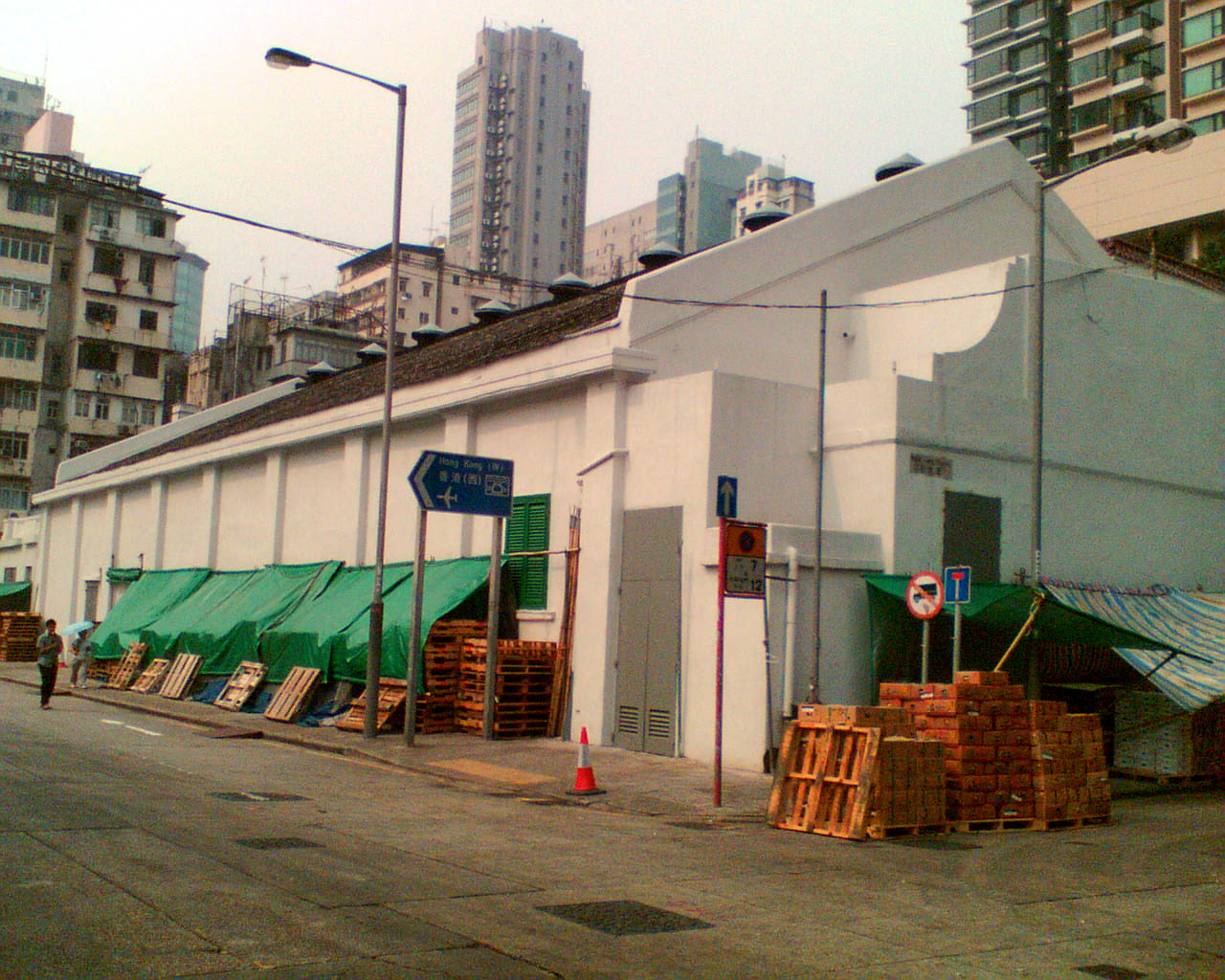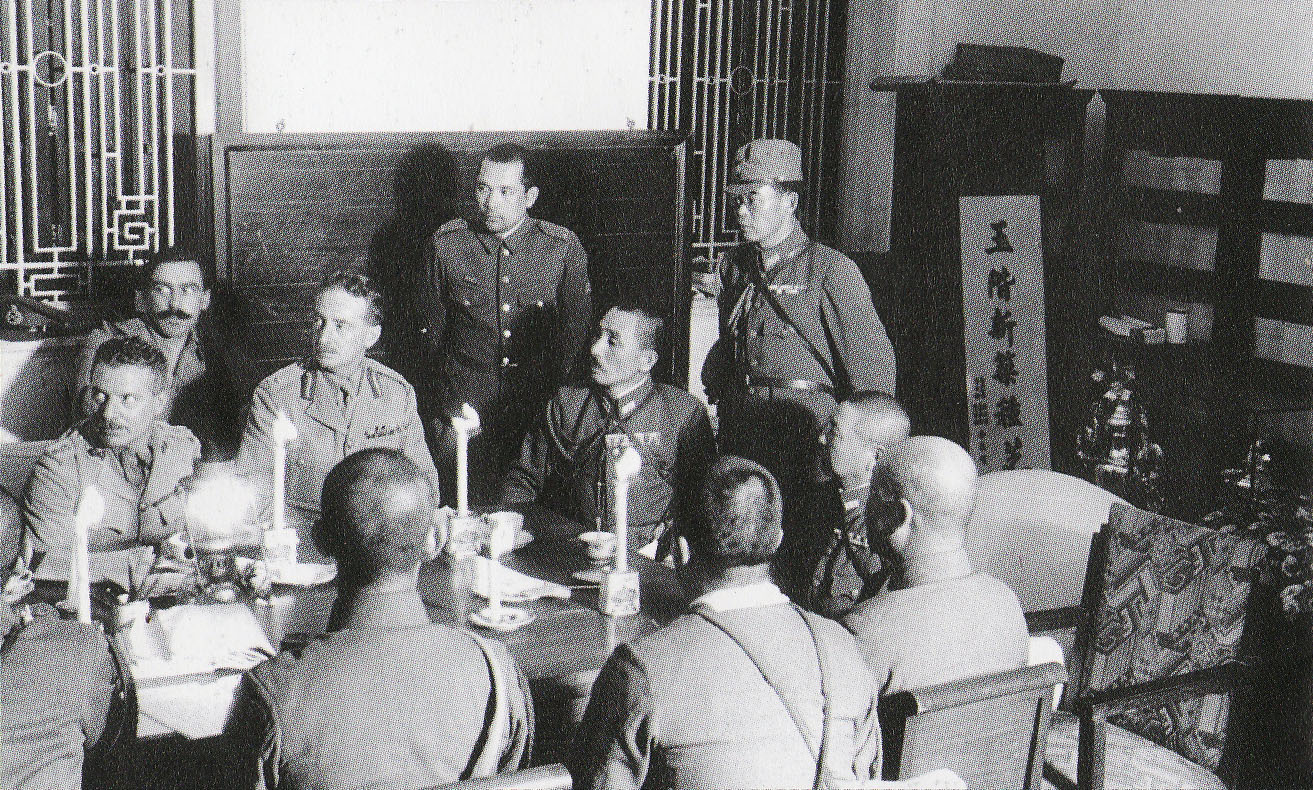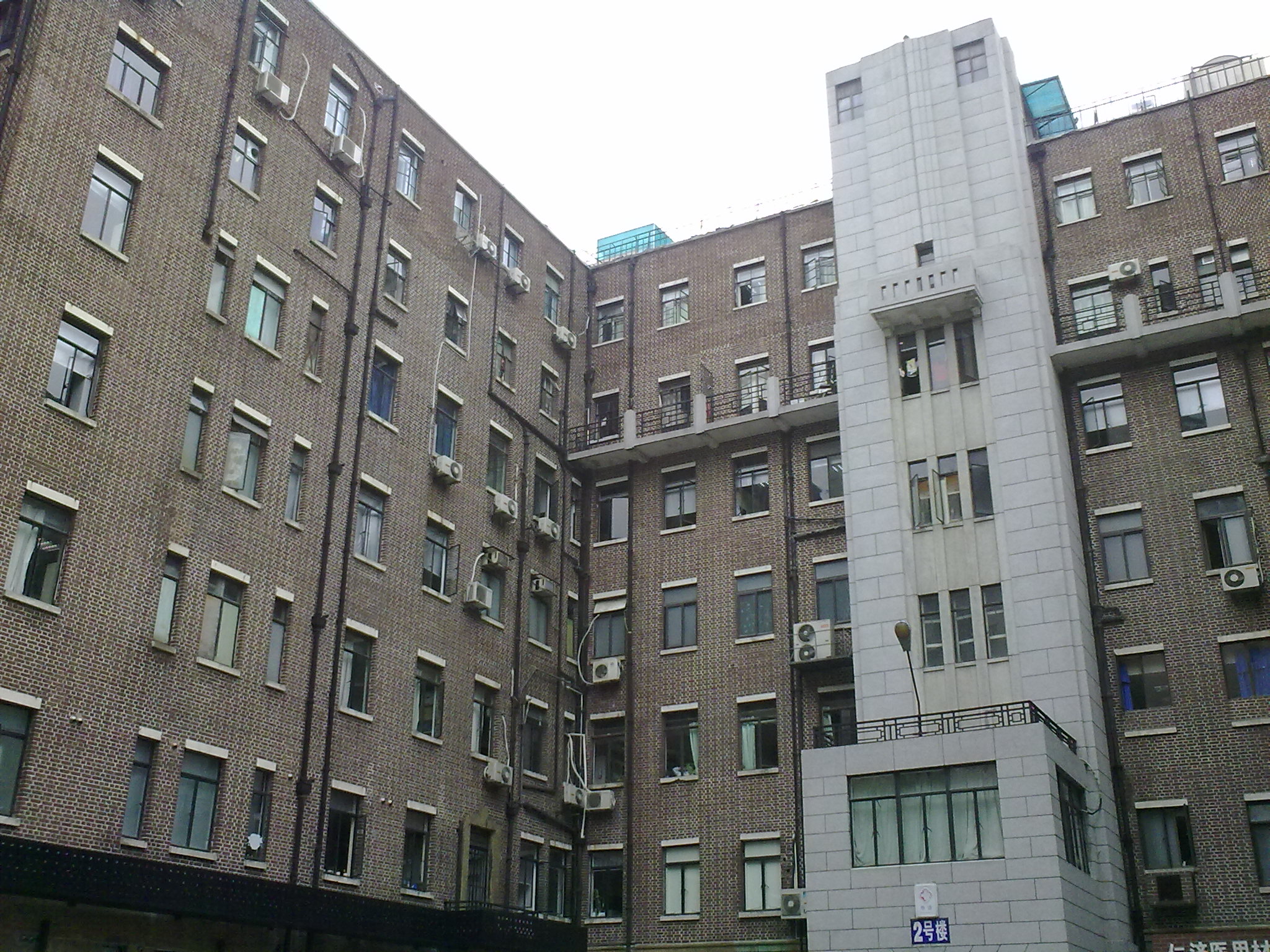|
List Of Art Deco Architecture In Asia
This is a list of buildings that are examples of Art Deco in Asia: Cambodia * Central Market (Phsar Thom Thmei), Phnom Penh, Phnom Penh, 1937 * Central Market, Battambang * Royal railway station, Phnom Penh, 1932 China * Bank of China (formerly the Xinje Bank), Nanjing, 1937 * , Macau, 1952 * Oi Kwan Hotel, Canton, 1937 * Teatro Apollo (now Esprit store), Macau, 1935 Shanghai source: * , Shanghai, 1941 * Astrid Building, Shanghai, 1933 * Avenue Apartments, Shanghai, 1932 * Bank of China Building, Shanghai, Shanghai, 1937 * Bank of Shanghai/Shangha Federation of Trade Unions (formerly the China Bank of Communications), Shanghai, 1949 * Bank of Taiwan Building, Shanghai, 1924 * Broadway Mansions, Shanghai, 1935 * , Shanghai, 1932 * , Shanghai, 1926 * , Shanghai, 1936 * Chinese YMCA, Shanghai, 1934 * Defense of Sihang Warehouse, Shanghai, 1931 * Denis Apartments, Shanghai, 1928 * Dubail Apartments, Shanghai, 1931 * Dufour Apartments, Shanghai, 1939 * Embankment Buildi ... [...More Info...] [...Related Items...] OR: [Wikipedia] [Google] [Baidu] |
Art Deco
Art Deco, short for the French ''Arts Décoratifs'', and sometimes just called Deco, is a style of visual arts, architecture, and product design, that first appeared in France in the 1910s (just before World War I), and flourished in the United States and Europe during the 1920s and 1930s. Through styling and design of the exterior and interior of anything from large structures to small objects, including how people look (clothing, fashion and jewelry), Art Deco has influenced bridges, buildings (from skyscrapers to cinemas), ships, ocean liners, trains, cars, trucks, buses, furniture, and everyday objects like radios and vacuum cleaners. It got its name after the 1925 Exposition internationale des arts décoratifs et industriels modernes (International Exhibition of Modern Decorative and Industrial Arts) held in Paris. Art Deco combined modern styles with fine craftsmanship and rich materials. During its heyday, it represented luxury, glamour, exuberance, and faith in socia ... [...More Info...] [...Related Items...] OR: [Wikipedia] [Google] [Baidu] |
Hengshan Picardie Hotel
Hengshan Picardie Hotel () is an Art Deco five-star hotel in Shanghai, China. It was constructed by , in 1934 as Picardie Apartments, after French Chinese post co-director . See also * Hengshan Road * Park Hotel Shanghai * Broadway Mansions Broadway Mansions (, Shanghainese: ''Pahlowe Dusa'') is a nineteen-floor Art Deco five-star hotel in Shanghai, China.Dmitri Kessel, ''On Assignment: Dmitri Kessel, Life photographer'' (Abrams, 1985):149. and was for over five decades one of the p ... References Art Deco architecture in Shanghai Hotels in Shanghai Hotel buildings completed in 1934 1934 establishments in China {{Shanghai-stub ... [...More Info...] [...Related Items...] OR: [Wikipedia] [Google] [Baidu] |
Yau Ma Tei Theatre
Yau Ma Tei Theatre, sometimes transliterated as "Yaumati Theatre"), once the largest theatre in Kowloon, is located at the junction of Waterloo Road and Reclamation Street, in Yau Ma Tei, Hong Kong. It is classified as " Grade II Historic Building" It is the only remaining pre-World War II theatre in Kowloon. It was recently converted into a venue for Cantonese opera. Another historical structure, Yau Ma Tei Fruit Market is adjacent to the theatre, across Reclamation Street. Yau Ma Tei area Situated in the south of Kowloon, Yau Ma Tei ( or ) was once a village and is now one of the most historic areas in Hong Kong. Before British rule of Kowloon in 1860, Yau Ma Tei was known in historical documents by the name of Kwun Chung with Tanka fisherman clustering around its beach and bay. Today, after many reclamation attempts by the Hong Kong Government, a harbour still stands which is used for the fishing industry. Yau Ma Tei is also famous for its Typhoon Shelter and seafood ... [...More Info...] [...Related Items...] OR: [Wikipedia] [Google] [Baidu] |
The Peninsula Hong Kong
The Peninsula Hong Kong is a colonial-style luxury hotel located in Tsim Sha Tsui, Kowloon, Hong Kong. It is the flagship property of The Peninsula Hotels group, part of the Hong Kong and Shanghai Hotels Group. The hotel opened in 1928 and was the first under The Peninsula brand. Expanded in 1994, the hotel combines colonial and modern elements, and is notable for its large fleet of Rolls-Royces painted a distinctive "Peninsula green". History Founded by members of the Kadoorie family, The Peninsula was built with the idea that it would be "the finest hotel east of Suez". Originally planned for a 1924 opening, the hotel opened on 11 December 1928 and was the successor of Hongkong Hotel. The Peninsula was located in Tsim Sha Tsui, Kowloon, Hong Kong. at the junction of Nathan Road and Salisbury Road, directly opposite the quays where ocean liner passengers disembarked. Kowloon was also the last stop on the trans-Siberian rail link that brought travelers from Europe. Fol ... [...More Info...] [...Related Items...] OR: [Wikipedia] [Google] [Baidu] |
Bank Of China Building (Hong Kong)
Bank of China Building () is located at no.2A Des Voeux Road Central, Central, Hong Kong. It is a sub-branch of Bank of China (Hong Kong). History The site was originally occupied by the eastern part of the old City Hall, which had been built in 1869. The western part of the City Hall was demolished in 1933 to make way for the 3rd generation of the Hong Kong & Shanghai Bank Building, while the eastern part was demolished in 1947 to make way for the Bank of China Building.EIA: A survey report of Historical Buildings and Structures within the Project Area of the Central Reclamation Phase III Chan Sui San Peter for the HK Government, February 2001 It was designed by [...More Info...] [...Related Items...] OR: [Wikipedia] [Google] [Baidu] |
Wukang Mansion
The Wukang Mansion or Wukang Building (), formerly known as the Normandie Apartments or International Savings Society Apartments, is a protected historic apartment building in the former French Concession area of Shanghai. It was designed by the Hungarian-Slovak architect László Hudec and completed in 1924. The building has been the residence of many celebrities. Location The building is located at the southern end of Wukang Road (formerly Route Ferguson), on the corner with Middle Huaihai Road (formerly Avenue Joffre), in Shanghai's Xuhui District. It is in the western part of the former French Concession area of the city. The address of the building is 1836–1858 Middle Huaihai Road. Architecture Completed in 1924, the eight-storey building was designed by the renowned Hungarian-Slovak architect László Hudec (1893–1958), who designed many landmarks in Shanghai. It is in the French Renaissance style and is the oldest veranda-style apartment building in Shanghai. There' ... [...More Info...] [...Related Items...] OR: [Wikipedia] [Google] [Baidu] |
Shanghai, China
Shanghai (; , , Standard Mandarin pronunciation: ) is one of the four direct-administered municipalities of the People's Republic of China (PRC). The city is located on the southern estuary of the Yangtze River, with the Huangpu River flowing through it. With a population of 24.89 million as of 2021, Shanghai is the most populous urban area in China with 39,300,000 inhabitants living in the Shanghai metropolitan area, the second most populous city proper in the world (after Chongqing) and the only city in East Asia with a GDP greater than its corresponding capital. Shanghai ranks second among the administrative divisions of Mainland China in human development index (after Beijing). As of 2018, the Greater Shanghai metropolitan area was estimated to produce a gross metropolitan product ( nominal) of nearly 9.1 trillion RMB ($1.33 trillion), exceeding that of Mexico with GDP of $1.22 trillion, the 15th largest in the world. Shanghai is one of the world's major centers for f ... [...More Info...] [...Related Items...] OR: [Wikipedia] [Google] [Baidu] |
Rockbund Art Museum
The Rockbund Art Museum (RAM, ) is a contemporary art museum in central Shanghai. The museum is on Huqiu Road, in the former Royal Asiatic Society building completed in 1933 near The Bund waterfront. The museum is dedicated to being an influential, innovative, sustainable organization devoted to the promotion of projects within the field of international contemporary art. There are no permanent collections. Featured Chinese artists have included Cai Guo-Qiang and Zeng Fanzhi. History Rockbund Art Museum is located in the peninsular headland where Suzhou Creek flows into the Huangpu River, in an area now marketed as the "Source of the Bund" (''Waitanyuan''). The museum is housed in the former Royal Asiatic Society (RAS) building, which was also home to one of China's first modern museums, the previous Shanghai Museum. Adjacent to the Former Consulate-General of the United Kingdom, Shanghai, this neighborhood was one of the first settlements of foreign expatriates, and a cent ... [...More Info...] [...Related Items...] OR: [Wikipedia] [Google] [Baidu] |
Renji Hospital
Renji Hospital () is a general hospital in the Pudong District of Shanghai, China, with the rank of "Grade 3, Class A". The hospital is a university hospital affiliated to the Shanghai Jiao Tong University School of Medicine. History Renji is the first western hospital in Shanghai and the second in China. William Lockhart, a missionary from Britain, rented a house in the inhabited area near Da Dong Men (Big East Gate) of Shanghai County and opened the hospital in 1844, the 24th year of the Qing dynasty Daoguang Emperor. It was then known as 'the Chinese Hospital'. Two years later, the hospital moved to Mai Jia Quan (now Middle Shandong Road), and changed its name to Shantung Road Hospital, also called Renji Yi Guan (), which had 60 beds and started an out-patient clinic. In 1927, the hospital received a legacy from the British merchant, Henry Lester, comprising one million taels of silver and four lots of real estate, which were used to expand the hospital. In 1932, a six flo ... [...More Info...] [...Related Items...] OR: [Wikipedia] [Google] [Baidu] |
Peace Hotel
The Peace Hotel () is a hotel on The Bund in Shanghai, China, which overlooks the surrounding areas. The hotel has two different buildings. The Sassoon House, originally housed the Cathay Hotel and is today the Fairmont Peace Hotel run by Fairmont Hotels and Resorts of Canada. The South Building was built as the Palace Hotel and is today a residence and studio for artists, known as The Swatch Art Peace Hotel. The two buildings both face the Bund, but are divided by Nanjing Road. North Building The larger North Building is called Sassoon House. The building was built by Sir Victor Sassoon, of the Sassoon family, which built a Shanghai business and real estate empire in the early 20th century. He was a British Sephardic Jew of Iraqi origin, educated at Harrow School and Cambridge University. His family owned the trading company " E.D. Sassoon & Co.", which managed extensive business interests in Bombay, Hong Kong, and Shanghai. Sassoon House was the first high-rise building bui ... [...More Info...] [...Related Items...] OR: [Wikipedia] [Google] [Baidu] |
Park Hotel Shanghai
Park Hotel (), historically the Shanghai Joint Savings Society Building, is an Art Deco hotel on Nanjing Road West, Shanghai, China. It was the tallest building in Asia from its completion in 1934 to 1963. History The Shanghai Joint Savings Society Building, located at No.170 Nanjing Road West, was named after the Joint Savings Society, founded in 1923 by the merger of Yienyieh Commercial Bank, Kincheng Banking corporation, the China and South Sea Bank, and the Continental Bank. It was built as a competitor for the Cathay Hotel. The building was designed by the Hungarian-Slovakian architect László Hudec in March 1931 and construction was completed in December 1934. The building is 83.8 metres tall and contains 22 stories above ground and another 2 stories underground. Built by Voh Kee Construction Company, the piling project was finished by a Danish Company established by Corrit. Strongly inspired by the American Radiator Building, it is among the well known building from Hud ... [...More Info...] [...Related Items...] OR: [Wikipedia] [Google] [Baidu] |
Paramount (Shanghai)
The Paramount () is a historical nightclub and dance hall at 218 Yuyuan Road in Jing'an, Shanghai, China. It was the largest ballroom in Shanghai before the People's Liberation Army established control over the city in 1949. History The Paramount, designed in Art Deco style by the architect S. J. Young (楊錫鏐 ''Yáng Xíliù'', 1899-1978) was completed in 1933,Warr, Anne: ''Shanghai Architecture'', The Watermark Press, 2007, by a group of Chinese bankers. It lay just off Bubbling Well Road (now Nanjing West Road), a major entertainment thoroughfare and was a meeting place for the wealthy elite of Shanghai society. The Ballroom lasted under its original owners before going bankrupt in 1936. In 1937, it was converted into a taxi dance hall featuring Chinese dance hostesses, which it remained until 1949. In 1956, following the Chinese Communist Revolution, the Paramount was closed and it later reopened as the Red Capitol Cinema showing Maoist propaganda films. As a result of t ... [...More Info...] [...Related Items...] OR: [Wikipedia] [Google] [Baidu] |
_interior.jpg)





